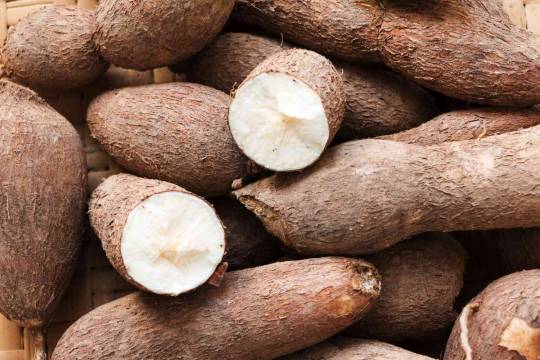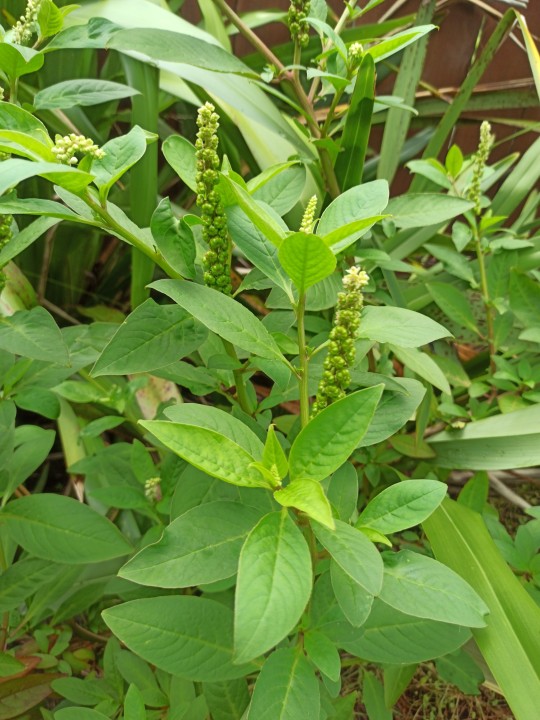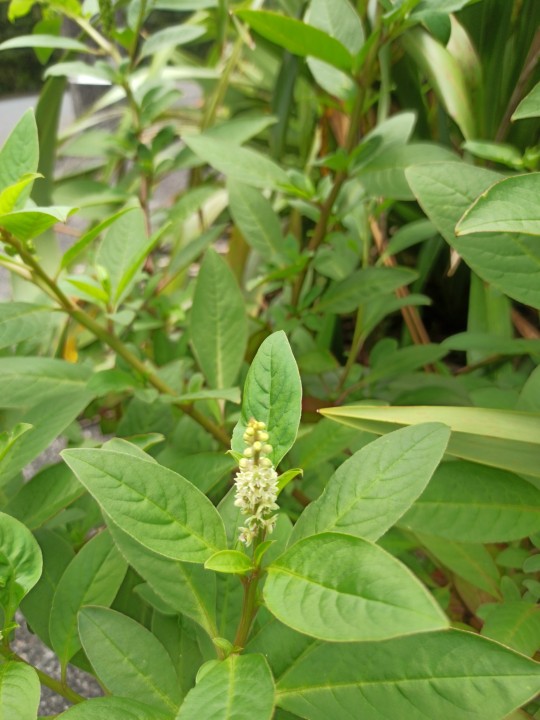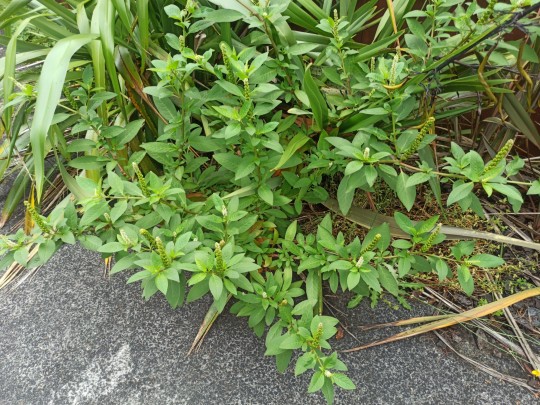#plants used in Native American cuisine
Text
Red dead gang + flowers
Arthur Morgan - Dudleya cymosa; Canyon liveforever, native to California cliff faces and craggy areas, thrives in the sun and blooms vibrant red and orange cymes. Pointed rosettes of succulent leaves form the base which sends out a delicate bloom in early summer. This flower is also the one found in the terrarium jar on Arthur's bedside table.

Tilly Jackson - Helianthus annuus; Common sunflower, a showy plant native to grasslands in the US, its undomesticated form is a branching annual plant with many flower heads. Its domesticated form is an important food crop grown both for its seeds and seed oil. It's common in sunny gardens, where its unmistakable bright blooms attract pollinators. Commonly symbolizes longevity and adoration.

Sean Maguire - Tripolium pannonicum; Sea aster, native to Ireland, a very hardy plant that requires very little to thrive. Showy purple blooms usually a bit ruffled, but all the brighter in their seaside environments.

Charles Smith - Quercus alba; White oak, a staple crop for thousands of years, white oaks of the Quercus genus are amongst the most important habitat species for wildlife in North America. These trees provide food, shelter, fuel, and fertilizer for countless native flora and fauna, and oaks are among the few trees that thrive in both open fields and sheltered forests. Their diminuitive flowers (catkins) are wind pollinated and mature into thousands of acorns per tree every 2-10 years. Traditionally associated with bounty, wisdom, and protection. (Not a flower in the traditional sense, but catkins do count and white oak really REALLY suited Charles so I'm putting this in)

Dutch Van Der Linde - Pueraria montana; Kudzu vine, a hardy, subtropical plant introduced to the US with bright sweet pea flower spikes in spring. Rapidly spreads to completely cover native flora, shading out and crushing plants and depleting habitat for mutualistic wildlife. This vine is a noxious invasive in the southern US.

Hosea Matthews - Triticum aestivum; Wheat, grown as a staple crop around the world, wheat has many uses and is considered the backbone of western cuisine. Often grown in wide monocrop fields, mature wheat's golden color makes for a striking image. Commonly symbolizes bounty and resurrection. (Yes, grass (Poaceae) is a flowering plant family!)

Mary-Beth Gaskill - Viola riviniana; Common dog violet, native to europe, its nodding purple blooms can be found along roads and creeks in lightly shaded areas. Flowers in this genus traditionally symbolize modesty and humility.

Abigail Roberts/Marston - Rudbeckia hirta; Black-eyed Susan, a popular midwest native wildflower common in gardens for its sunny florets and contrasting center. Its association with gardening is a long established one, and traditionally symbolizes encouragement, adaptability, and determination.

Molly O'Shea - Passiflora alata; Winged-stem passionflower, a species native to the south American tropics and known for its visually distinctive red petals and exotic striped filaments. A delicate looking nodding flower with an edible fruit, commonly cultivated for its medicinal benefits and its beauty.

This post got very long! I will make a part two to save you the effort of scrolling <3
#rdr2#Red Dead Redemption 2#Botany#Long post#Arthur Morgan#Tilly Jackson#Sean Macguire#Dutch van der Linde#Hosea Matthews#Mary Beth Gaskill#Abigail Roberts#Molly O'Shea#*combines my two special interests*
324 notes
·
View notes
Text

Tomatoes (Solanum lycopersicum, Solanaceae - Nightshade Family)
Native to Mesoamerica though via colonization tomatoes became a signature ingredient in European cuisines (eg. Italian). Modern cuisines worldwide, in fact, would look much different if Indigenous Americans were unaware of the brilliance of the tomato.
Interestingly, the fruits were previously shunned and thought to be deadly poisonous by Europeans and American settlers. This scenario has lent itself to the term 'tomato effect.'
Coined in the Journal of the American Medical Association 27 years ago, the tomato effect describes the rejection of highly efficacious therapies by the medical establishment because they happen to go against the prevailing conventional wisdom.
Imported from the New World, “By [the year] 1560, the tomato was becoming a staple of the continental European diet…[A]t the same time it was actively shunned in North America [for literally centuries]… The reason…is simple: they were poisonous. Everyone knew they were poisonous, at least everyone in North America. It was obvious.”
Examples of this tomato effect—a slavish devotion to orthodoxy—are mentioned in medicine. For example, ignoring the successful use of this plant in the treatment of gout for a thousand years before modern medicine “discovered” it was the drug colchicine. Aspirin was also ignored for almost 3,000 years of successful use as willow tree bark extract.
Tomatoes used to grow as wild as weeds in Central and South America. The Aztecs and Incas were among the first known to use the plant in their food.
They have an unmistakeable bright cheery taste which fits into the savory & umami flavor categories. They are also very cooling and hydrating in nature, which allows it to harmonize perfectly with the sunny days of its growing season. A simple taste of tomatoes captures the essence of such days. It's no wonder why it is one of the most consumed "vegetables" in the United States, even critical to many fast food dishes.
The leaves of the tomato have also been feared, even into our current times. But many have eaten & cooked with it, though it would be unwise to consume the leaves in excessive portions, which is the same for any one leafy green. Due to the content of antinutrients in leafy greens combined with the varied ability to handle these antinutrients (eg. oxalates), which is thought to change according with one's genetics & gut microbiome status, eating an assortment of different greens is a general nutritional recommendation.
The tomato fruit is a notable source of Vitamins C, E, and K, potassium, and lycopene (an antioxidant, and thus gives tomato the reputation of aiding prevention against inflammation-related diseases and imbalances). On a similar vein, it is brewed as tea, though very rarely, to bring relief to cold & flu symptoms.
Nutrient absorption of the tomato is thought to be improved once cooked or processed in other ways which softens the cell walls. The combination of tomatoes and olive oil may also been an intuitive realization of increased nutrient absorption.
The fruit is a main ingredient in the following: sauces like marinara, ketchup, salsa, pico de gallo, tomato paste, tomato juice, tomato soup, gazpacho, pizza, ratatouille, paella, tagine, bravas sauce, shakshuka, fried green tomatoes, jollof rice, tomato galettes, butter chicken, tikka masala, saneyet batates, burgers, etc.
Its flowers tend to be small and yellow. The flower's energies have been captured in vibrational flower essences. They're thought to hold a 'warrior energy,' with qualities of mental strength and endurance. It has been reported to aid with nightmares, depression due to unhappiness with one's weight, dentist's office anxiety, pets with uncontrollable fear or a history of traumatic abuse, and addiction management.
(Photograph by Mats Dreyer)
14 notes
·
View notes
Text
There are vastly more people of color working to advance the science of food today than there were 50 years ago. While it’s encouraging to see these numbers grow, some may not realize that Black scientists, innovators, and inventors have made significant contributions to the science of food dating back to the 1800s.
As the U.S. celebrates Black History Month, we recognize the accomplishments of 8 Black food scientists whose life work has had a lasting impact on the science of food and the global food system.
George Washington Carver: Perhaps the most well-known Black American food pioneer is George Washington Carver. A scientist, educator, conservationist, artist, and humanitarian, Carver was born into slavery in 1864. While he is best known for his work with peanuts, Carver had many notable scientific accomplishments including introducing the concept of crop rotation with soil-building, protein-rich crops including peanuts, sweet potatoes, and soybeans, conducting ground-breaking research on plant biology, much of which focused on new uses for crops including peanuts, sweet potatoes, soybeans, and pecans, and pioneering a mobile classroom to bring valuable lessons to farmers throughout Macon County, Alabama. He also made significant contributions to making the food system more just and improving the quality of life for impoverished Southern farmers. Watch our recent panel discussion to learn more about the Carver’s impact on the science of food or learn more in a recent blog post.
Norbert Rillieux: Born free in 1806 on a New Orleans plantation, Norbert Rillieux is considered one of the earliest chemical engineers. A student of thermodynamics, Rillieux published a series of papers on steam engines and steam power. He then began working on a solution to address evaporating moisture from cane juice while lowering heat to produce a whiter, more refined, sugar crystal. Among his greatest scientific achievements was his discovery that the repeated use of latent heat at reduced pressure would result in the production of better quality sugar at lower cost. This understanding led to his invention of the multiple effect evaporator, which increased sugar production, reduced production costs, and protected lives by ending the older dangerous methods of sugar production. Milieux’s multiple-effect evaporator under vacuum has been designated a National Historic Chemical Landmark, and Rillieux himself is a member of the National Inventors Hall of Fame.
Malinda Russell: Printed in 1866, Malinda Russell is the author of the first complete African-American cookbook—A Domestic Cookbook: Containing a Careful Selection of Useful Receipts for the Kitchen. Born in Tennessee around 1820, Russell was a free woman of color descended from a grandmother who was an emancipated enslaved person. She worked as a cook for prominent families and ran a boarding house, pastry shop, and washhouse, and published her cookbook in an attempt to make enough money to return to Tennessee. The cookbook’s 39 pages with 250 brief recipes of food and home remedies offers insights into the food and culture of the time. It also challenges ingrained views of Black cuisine, particularly soul food.
George Crum: The son of an African American father and Native American mother, George Speck, later known as George Crum, was born in Saratoga Springs, NY in 1824. While working as a chef at Saratoga Springs’ Moon Lake Lodge resort, Crum accidentally invented potato chips. When a customer sent their French fried potatoes back for being too thick and salty, Crum responded by slicing a new batch ultra-thin and frying them until they were hard and crunchy. Much to his surprise, the customer liked the chips this way and the first iteration of potato chips were born. Some accounts suggest that Crum’s sister Kate, who worked alongside him as a prep cook, was actually the one to invent potato chips. Regardless, Crum later opened a restaurant of his own—Crum’s House—which proudly featured a basket of potato chips on every table and popularized the salty snack.
Joseph Lee: A member of the National Inventors Hall of Fame, Joseph Lee is an honored pioneer in the food preparation industry. Born in Boston in 1849. Lee began his career in foodservice as a boy, first working in a bakery and later as a waiter, cook, and hotel manager. Considered a master cook, Lee was frustrated with the immense amount of bread thrown out every day and began work to create and patent several bread-related inventions. In 1895, he received a patent for a device that mechanically tore, crumbled, and ground old bread to form breadcrumbs. In 1902, he invented and patented an automatic bread making machine that could uniformly knead dough, allowing for a faster, cheaper, and more sanitary way of making bread.
Frederick McKinley Jones: The first African American to be awarded the National Medal of Technology and Innovation (posthumously), Frederick McKinley Jones was a prolific inventor, best known for revolutionizing the preservation and transportation of food and other perishables. Born near Cincinnati, Ohio in 1893, Jones had an interest in mechanical and electrical engineering at a young age, and he educated himself in his spare time both before and after serving in World War I. Jones holds more than 60 patents for his various inventions, with the majority pertaining to refrigeration technology. His greatest scientific contribution is the 1935 invention of an automatic refrigeration system for trucks, trailers, railroad cars, which was later adapted for other modes of transportation including ships and planes. This system enabled the long-distance transport of meat, fresh produce, and other perishable foods and effectively transformed the shipping and grocery industries.
Lloyd Augustus Hall: A true food preservation pioneer, Lloyd Augustus Hall is responsible for inventing many chemical preservation techniques that are still in use today. Born near Chicago in 1894, Hall earned more than 100 U.S. and foreign patents in food chemistry throughout his illustrious career. Most notably, Hall successfully discovered a method to combine sodium chloride with tiny crystals of sodium nitrate and nitrite to prevent food from spoiling. He later used chemicals like lecithin to develop antioxidants, which prevented fats and oils in foods from reacting with oxygen and spoiling. He also invented a way to use ethylene oxide gas in a vacuum chamber to purify foods of microbes such as bacteria and molds that cause spoilage. One of America’s top food chemists, Hall is a member of the National Inventors Hall of Fame.
Marie Maynard Daly: Born in 1921 in New York, Marie Maynard Daly had a passion for science much like her father. Daly is best known for being the first African American woman to receive a PhD in chemistry in the United States, but her scientific impact was far greater than receiving her degree. Daly conducted important studies on cholesterol, sugars, and proteins in an effort to better understand how sugars and other nutrients affect the health of arteries, and how foods and diet can affect the health of the heart and circulatory system.
Countless other Black scientists, innovators, and inventors have made a mark on the science of food during the last two centuries in big and small ways. We celebrate all of their contributions, as each play a role in solving the challenges that lie ahead.
#8 Black Scientific Pioneers Who Forever Changed Food#Blacks in Science#Black Foodies#Blacks in Food#Food Science#Black History Matters
0 notes
Text
Exploring the Tapioca Trail: A Culinary Adventure Beyond Pearls
Tapioca, often associated with its role as the small, chewy pearls in bubble tea, has a rich and diverse history that extends far beyond its trendy drink status. In this culinary journey, we'll dive deep into the world of tapioca, discovering its origins, versatile uses, and the myriad of delicious dishes that go beyond the familiar bubble tea.

Unveiling Tapioca's Roots
To truly appreciate tapioca, one must start at its roots. Tapioca is derived from the starchy roots of the cassava plant, a tropical shrub native to South America. Indigenous communities have been cultivating and consuming cassava for centuries, recognizing its nutritional value and adaptability to various climates.
From Puddings to Popsicles
Tapioca's versatility extends to its culinary applications. Beyond the iconic bubble tea, tapioca is a star in traditional desserts like tapioca pudding. Its unique texture, achieved through cooking the pearls until they are translucent, adds a delightful chewiness to the creamy pudding. As we explore various cuisines, we find tapioca making appearances in unexpected places, from Brazilian beijinho candies to Thai coconut tapioca soup.
Tapioca in Savory Delights
While tapioca is often associated with sweetness, its neutral flavor makes it a fantastic addition to savory dishes. In Brazilian cuisine, tapioca flour is used to make gluten-free crepes called "tapiocas." These crepes can be filled with an array of ingredients, from cheese and ham to sweet and savory combinations. We'll unravel the secrets behind creating the perfect tapioca crepe and explore the global influence of this simple yet delicious dish.
Tapioca's Health Benefits
Beyond its culinary charm, tapioca boasts several health benefits. It is naturally gluten-free, making it a suitable alternative for those with gluten sensitivities. Additionally, tapioca provides a quick source of energy due to its high carbohydrate content. However, moderation is key, as excessive consumption may lead to an imbalance in nutritional intake.
Tapioca Trends Around the Globe
As tapioca gains popularity globally, regional variations and innovative twists on traditional recipes emerge. From tapioca-infused cocktails to tapioca-infused ice cream, chefs and food enthusiasts are finding creative ways to incorporate tapioca into contemporary culinary trends. We'll take a closer look at these exciting developments and how they contribute to tapioca's evolution in the culinary scene.
The Ever-Expanding Tapioca Universe
In conclusion, tapioca's journey from its South American roots to global culinary stardom is a testament to its adaptability and appeal. As we explore the tapioca trail, we discover a world of flavors and possibilities beyond the familiar bubble tea pearls. Whether sweet or savory, tapioca continues to captivate our taste buds and redefine its role in the ever-evolving landscape of global cuisine. So, the next time you enjoy a tapioca-infused treat, remember the rich history and diverse culinary journey that brought it to your plate.
0 notes
Text

The outset of the new year is always an exciting time for the unveiling of annual food trend predictions and, so far, 2024 is no exception! With the top trends once again highlighting American’s growing preference for sustainably produced, eco-friendly foods, rest assured that your local farmers market is always going to offer an important and environmentally-sound way to source your weekly groceries. Here is a look at some of the other big trends that are shaping the food and beverage industry at large and how you can embrace them while shopping in the farmers market this coming year.
Make Room for Mushrooms
According to key indicators, mushrooms will hit it big in 2024! With sprouting interest in plant-based and plant-forward diets that are better for both the planet and our own health, mushrooms provide a readily accessible and affordable meat replacement full of hearty texture, umami flavor and nutritional goodness. In particular, Lion’s Mane–a spongy, shaggy mushroom native to North America that grows on woody tree trunks and logs–is surging in popularity thanks to its mild flavor and velvety texture that mimics shellfish like scallops, lobster and crab.
To learn about their nutritive properties, unlimited culinary potential and creative ways to incorporate more mushrooms in your diet this winter, be sure to visit the Mushrooms.NYC booth. Mushrooms.NYC is family-owned and run by a collective of long-time friends who came together through their passion for urban farming and sustainability. The mushrooms they grow are chockfull of essential nutrients, quick and easy to prepare and offer a low-carbon alternative to meat in many recipes.
It’s a Big Dill: Pickled and Fermented Foods
Pickles are the ‘it’ ingredient again according to the 2024 food trends report from Datassential, a restaurant and menu consultancy. Driven by an exploding interest in functional foods that can boost one’s gut health and the white-hot trend of “newstalgia” that blends familiar flavors with something new and fresh, pickled and fermented foods are set to take center plate in 2024!
Evidence of this trend includes a ‘dill-uge’ of dill pickle flavor in highly processed foods like commercial ketchup and potato chips. But don’t settle for junk food to get your flavor fix: real, old fashioned pickles are a veritable institution in New York farmers markets, with a zingy variety of seasonings and styles available. So, if you want a bite of the real dill, stop by Dr. Pickle for briny, tangy, crunchy pickles and a range of pickled delights from olives to sauerkraut to giardiniera and more.
To give your microbiome and spicy Korean food cravings a real treat, grab a jar of Kimchi Kooks small-batch kimchi that's made in Brooklyn using fermented, seasonal, local vegetables such as kale, cabbage, beets and lotus root. Raw and gluten-free, their kimchi is packed with essential vitamins, minerals and non-dairy probiotics. And swing by SayChef to indulge in their culinary creations featuring local produce from the far east end of Long Island. Chef David uses a special canning method he learned while studying in Italy to preserve and seal their unique recipes such as Sicilian Caponata, Napoli Marinated Artichoke Hearts, Pickled Golden Sweet Beets, and Pickled Turnips & Dill in beautiful, reusable glass jars.
Soup it up!
Just in time to thaw out over cold weather comfort food, The New York Times and other food trend prognosticators have proclaimed soup to be 2024’s Dish of the Year! Not only is soup the ideal winter fare, it also provides a perfect medium for experimenting with other leading food trends including vegetable-forward meals, cross-cultural mashups, and ‘glocal’ flavors that combine global cuisine with locally grown and produced ingredients. For internationally inclined gastronomes, the glocal food movement lets you take your taste buds on a tour of the world without the pricy travel tab or the need to leave your cozy kitchen – a win-win on all accounts!
To get an “instant” soup fix this Sunday, stop by KITCHEN 36 INC who create vegan and vegetarian small-batch soups that taste just like homemade. All their soups are made from scratch using a variety of seasonal, fresh ingredients and non-GMO beans and legumes. They hand chop, slow-simmer and freeze the soups to maintain their freshness. Just heat and eat for a healthy, delicious and satisfying meal! Alternatively, if you want to relish the snugness of your kitchen while preparing your own steaming pot of goodness, pick up chicken stock from Yellow Bell Farm and winter veggies from the farmstalls to make this hearty winter vegetable soup recipe by Martha Stewart.
We hope you enjoyed this fun glimpse into the presently unfolding food future of 2024 and look forward to seeing how these predictions play out within the milieu of the farmers market. But, while diet fads and food trends may come and go, fresh, nutritious, seasonal, locally grown and sustainably produced foods are sure to remain a fixture on these lists no matter what the latest spin or twist on them may be. That’s one trend I think we can all get behind this year and beyond!
#downtoearthmkts#farmersmarket#shoplocal#buylocal#localfood#farmersmarkets#eatdowntoearth#foodtrends#2024 food trends
0 notes
Text
Modified Starch Market to Record Steady Growth by 2027
The global modified starch market is estimated to be valued at USD 13.7 billion in 2022. It is projected to reach USD 15.9 billion by 2027, recording a CAGR of 3.1% during the forecast period. Modified starches are manufactured from native starches. Various processing methods, such as physical, enzymatic, wet-and-dry chemical processes, drum drying, and extrusion, are used to produce different types of modified starch products. These processes are used to change the properties of native starch, such as its freeze-thaw stability, acid or alkali resistance, and shear stability, to meet industrial requirements. Modified starches are used for functions such as thickening, stabilizing, binding, and emulsification. Apart from food products, it is also used in a wide range of non-food applications and in the animal feed industry.

Download PDF Brochure:
https://www.marketsandmarkets.com/pdfdownloadNew.asp?id=511
Restraints: High demand for gum Arabic
The application of starch derivatives is growing in the food & beverages sector. The global beverages sector is witnessing growth as an application of modified starches. However, the growth and preference of gum Arabic over modified starch act as a restraint for the growth of this market. Studies have shown that beverages stabilized with sources of gum Arabic attain better stability than those with modified starches. Apart from beverages, gum Arabic is also rising as a threat to modified starches in confectionery, where it is utilized to prevent sugar crystallization.
Opportunities: Untapped application of modified starch
Modified starch can also act as an excellent fermentation base for the bulk production of a wide variety of biotechnological products, such as organic acids, antibiotics, vitamins, and hormones. As a sole carbon source, providing energy for maintaining biological functions, starch-derived carbohydrates have a very high commercial value. Starch-derived glucose can be fermented to produce lactic acid, which may be polymerized for biodegradable films or bioplastics. Similarly, potato starch wastes may also be used as feedstock in fermentation reactions. Several polymers can be prepared using a variety of starch-based feedstock.
Hence, these untapped applications of starch need to be addressed. Expanding the commodity sources for extracting starch and combining modification processes adds a wider range of probable application fields to the existing exhaustive list. The technological potential and industrial utility of starch increase significantly by suitable modification.
Cassava is the fastest growing raw material segment in the global modified starch market
Cassava is one of the world’s major starch crops. It has a long tuberous starchy root that finds its place as an essential ingredient in many Latin American and Caribbean cuisines. Cassava is a widely grown tuber in most African and Asian countries, and it is also the most economical source of starch at a global level. It was, hence, prudent that in the wake of the forecasted shortage of corn and wheat as sources of starch, cassava (tapioca) starch would gain attention. Tapioca is the starch extracted from the storage roots of the cassava plant. The similarity of the functional properties of tapioca and corn starch has added to its advantages.
Request Sample Pages:
https://www.marketsandmarkets.com/requestsampleNew.asp?id=511
Asia Pacific is the largest and fastest-growing region in the modified starch market and anticipated to maintain its dominance over the forecast period
The modified starch market in the Asia-Pacific region is the largest. The market is estimated to grow at a significant rate, owing to the rising demand in large economies such as China, India, Japan, and other Southeast Asian countries. The industrial organization and technology of starch processing are changing rapidly in the region. Unlike other regions where starch is processed almost entirely by large companies, in Asia Pacific, starch processing is done by small and medium-sized firms. Historically, native starch has been largely used for food products in the region. The industrial applications and technologies involved in starch processing are changing rapidly in the Asia Pacific countries. Modified starch is increasingly being demanded by many industries in the region. Various industries are incorporating modified starches in their manufacturing processes and products.
0 notes
Text
Sustainable Growth Opportunities in the Mushroom Cultivation Industry
The mushroom cultivation market has been witnessing growth due to increased consumer awareness of the nutritional benefits and culinary versatility of mushrooms. Mushrooms are not only popular for their taste but also for their potential health benefits, as they are rich in vitamins, minerals, and antioxidants.
Global Demand: The global demand for mushrooms has been on the rise, driven by factors such as changing consumer preferences, a growing interest in plant-based diets, and the increasing awareness of the health benefits associated with mushroom consumption. The mushroom cultivation market is estimated at USD 16.7 billion in 2020 and is projected to reach USD 20.4 billion by 2025, at a CAGR of 4.0% during the forecast period.
Variety of Mushrooms: Different varieties of mushrooms are cultivated, including button mushrooms, shiitake, oyster mushrooms, and more. Each variety has its unique flavor profile and nutritional composition, contributing to the overall diversity of the market.
Organic and Specialty Mushrooms: There has been an increased interest in organic and specialty mushrooms. Consumers are willing to pay premium prices for mushrooms that are grown organically or have unique flavors and textures.
Technological Advancements: Technology has played a role in advancing mushroom cultivation methods. Controlled environment agriculture (CEA) and indoor farming techniques have been employed to optimize growing conditions and improve yields.
Health Benefits: Mushrooms are recognized for their potential health benefits, including immune system support, anti-inflammatory properties, and being a good source of vitamins and minerals.
Culinary Trends: Mushrooms are increasingly being incorporated into various cuisines and dishes, including plant-based and vegetarian recipes. This culinary versatility has contributed to the market's growth.
Sustainable Farming Practices: With a growing emphasis on sustainability, some mushroom cultivation operations focus on environmentally friendly practices, such as using recycled materials and sustainable farming methods.
To know more get PDF Copy:https://www.marketsandmarkets.com/pdfdownloadNew.asp?id=69443268
The shiitake mushroom segment is projected to be the fastest-growing in the mushroom cultivation market during the forecast period.
Also known as Black Forest mushrooms, these mushrooms are preferred by consumers because of their aromatic flavor, various nutritional and medicinal health benefits. They are one of the most popular cultivated varieties of specialty mushrooms. Native to Asia, it is primarily cultivated in Japan, China, and the US. They are a rich source of vitamins, minerals, protein, and are low in calories. Multiple health benefits associated with shiitake mushrooms is expected to boost its sales in the coming years at a global level.
South America is projected to be the fastest-growing during the forecast period.
South America mushroom cultivation market is projected to be the fastest-growing during the forecast period. Countries such as Brazil and Argentina constituted the largest markets in the South American region. Rising awareness among consumers regarding the medicinal and culinary value of mushrooms is expected to expand mushroom cultivation in these countries. The availability of agriculture waste in these countries is expected to gain the interest of growers to switch towards mushroom cultivation since agriculture waste acts as a substrate for mushroom production. Lucrative opportunities ie ahead for Brazil since it is the largest producer of sugarcane at a global level, generating a significant amount of agriculture waste.
Top players analyzed:
Monaghan Mushrooms (Ireland), Walsh Mushrooms Group (Ireland), Mycelia (Belgium), South Mill Mushrooms Sales (US), Smithy Mushrooms Ltd. (UK), Rheinische Pilz Zentrale GmbH (Germany), Italspwan (Italy), Mushroom SAS (Italy) Hirano Mushroom LLC (Kosovo), Fujishukin Co. Ltd. (Japan), Societa Agricola Porretta (Italy), Gourmet Mushrooms, Inc. (US), Fresh Mushroom Europe (Belgium), Commercial Mushroom Producers (Ireland), Lambert Spawn (US), F.H.U Julita Kucewicz (Poland), Polar Shiitake Oy (Finland), Heereco BV (Netherlands), Bluff City Fungi (US), and Mycoterra Farm (US).
Book a meeting with our experts to discuss your business needs: https://www.marketsandmarkets.com/speaktoanalystNew.asp?id=69443268
Key questions addressed by the report:
What are the new application areas for the mushroom cultivation market that companies are exploring?
Who are some of the key players operating in the market, and how intense is the competition?
What kind of competitors and stakeholders would be interested in this market? What will be their go-to-market strategy, and which emerging market will be of significant interest?
How are the current R&D activities and M&As in the market projected to create a disrupting environment in the coming years?
What will be the level of impact of new product launches on the revenues of stakeholders due to the benefits, such as increasing revenue, environmental regulatory compliance, and sustainable profits for the suppliers, offered by the mushroom cultivation market?
0 notes
Text
Good stuff I read lately
Ozone Pollution: An Insidious and Growing Threat to Biodiversity, Jim Robbins, Yale Environment 360. Ever wonder why you're supposed to stay inside and limit driving on high ozone days? Ozone is really really bad.
The Tree That’s Rare, Endangered and Common, Zach St. George, Bay Nature Magazine. I found myself under a grove of pines in Cambria that my plant id app insisted were Monterey pines, which I remembered hearing are very rare. It turns out one of the three forests in the US is in Cambria and I stumbled into them. And this part struck me as incredibly profound, "It is easy to say, then, why a species is in a place: It can survive the abiotic and biotic conditions there, and it managed to arrive."
The Birds and the Beguines: Remembering habitually forgotten female saints. Laura Fabrycky, Comment. Endlessly fascinated by mystics and religious communities.
The story of Ohio’s ancient Native complex and its long journey for recognition as a World Heritage site, Stephen Warren, The Conversation. Finally the mounds are getting the respect they deserve.
The politics of hummus: Israel's search for cultural identity: A food guide's viral list of world's best cuisines reignites conversations on the politics of food, cultural theft and Israel's appropriation of Palestinian cuisine, Emad Moussa, Middle East Eye. and How food became a target of colonial conquest: Many Arabs are rightfully outraged at the rebranding of Palestinian dishes as 'Israeli' cuisine in western countries, Joseph Massad, Middle East Eye. Important. (Also, the way this makes me miss Jerusalem, a Palestinian restaurant in Denver, is the most I've missed Denver so far. Try the vegetarian platter if you go.)
Older Americans are dominating like never before, but what comes next? Marc Fisher, Washington Post (Yahoo link). Please, just retire. You'll be fine. We'll be fine. The world will probably be better for it.
The Strange Return of George W. Bush: Love him or loathe him, former President George W. Bush provides a perfect foil for our current political mess. Michael Schaffer, Politico. Please, stay retired.
Why All Poems Are Political: Unregulated and innately radical, poetry is an urgent expression of freedom, Kathleen Ossip, Electric Literature. "Poetry is the only utterly free space for language that I’m aware of, and that is what makes it indispensable to me, and also what makes writing it and reading it a political act: Any act where freedom is urgently at issue is a political act, and any space that makes us aware of our innate freedom is a radically political space."
1 note
·
View note
Text

Introduction
Sallisaw, Oklahoma, is more than just a picturesque town; it's a sanctuary for those seeking natural health and well-being. Tucked away from the chaos of the city, Sallisaw offers a unique environment where nature and wellness intertwine seamlessly. In this article, we will embark on a journey to uncover the secrets of Sallisaw Natural Health and how it has become a mecca for those pursuing holistic well-being.
The Allure of Sallisaw
Sallisaw's charm lies in its pristine natural surroundings. The town is blessed with lush greenery, rolling hills, and a serene atmosphere that beckons to those seeking respite from their hectic lives. The natural beauty of Sallisaw is not just soothing to the eyes; it also serves as a therapeutic backdrop for individuals looking to rejuvenate their bodies and minds.
Holistic Healing in Nature
Discovering the Healing Power of Nature
The healing power of nature is at the heart of Sallisaw's wellness philosophy. The town offers abundant opportunities for individuals to immerse themselves in the restorative embrace of the great outdoors. Whether it's a leisurely stroll through the woods or a hike along the scenic trails, Sallisaw's natural beauty has a calming and rejuvenating effect.
Forest Bathing: A Therapeutic Connection with Trees
Forest bathing, or Shinrin-Yoku, is a Japanese practice that has found a home in Sallisaw. It involves immersing oneself in the forest, breathing in the natural aromas, and simply being present in the moment. Studies have shown that this practice can reduce stress, boost mood, and enhance overall well-being.
Sallisaw's Natural Resources
Mineral Springs: A Gift from the Earth
Sallisaw is known for its natural mineral springs, which are believed to have therapeutic properties. These springs offer mineral-rich waters that can promote relaxation and alleviate various health issues. Visitors can enjoy a soak in these springs to experience their rejuvenating effects.
Medicinal Plants: Nature's Pharmacy
The rich flora of Sallisaw includes an array of medicinal plants that have been used for centuries by indigenous communities. These plants, such as echinacea and black cohosh, offer natural remedies for a variety of ailments. The Sallisaw Natural Health community has embraced the use of these plants for their healing properties.
Local Practices and Therapies
Traditional Native American Healing
Sallisaw has a deep connection to its Native American heritage. Traditional healing practices, such as herbal remedies and spiritual rituals, play a significant role in the local wellness scene. These practices are often combined with modern holistic approaches to provide a comprehensive healing experience.
Meditation and Mindfulness Retreats
Sallisaw offers numerous meditation and mindfulness retreats. These programs are designed to help individuals find inner peace and balance in the midst of life's challenges. The serene environment of Sallisaw enhances the effectiveness of these retreats.
Nutrition and Sallisaw Cuisine
Farm-to-Table Goodness
The farm-to-table movement is thriving in Sallisaw. Local farms provide fresh, organic produce that finds its way to the tables of Sallisaw's restaurants and households. This focus on fresh, locally sourced ingredients ensures that residents and visitors can enjoy wholesome and nutritious meals.
Healthy Eating in Sallisaw
Healthy eating is not just a trend but a way of life in Sallisaw. The town offers a variety of dining options that cater to different dietary needs, ensuring that everyone can savor delicious and nutritious dishes.
Sallisaw's Community Wellness Initiatives
Outdoor Fitness and Wellness Classes
Sallisaw encourages an active lifestyle with its outdoor fitness and wellness classes. These classes, often held in the town's scenic parks, offer a perfect blend of exercise and natural beauty, making fitness enjoyable and accessible.
Eco-Friendly Living
Sallisaw's commitment to natural health extends beyond personal well-being. The town promotes eco-friendly living, emphasizing sustainable practices that benefit both the individual and the environment. This holistic approach to wellness is truly inspiring.
The Power of a Supportive Community
Sallisaw's strength lies in its close-knit community. Residents and visitors alike share their knowledge, experiences, and support for one another's journey toward natural health. The sense of belonging and camaraderie is a crucial component of Sallisaw's wellness culture.
Visiting Sallisaw for Natural Health
Getting Here and Where to Stay
If you're intrigued by the idea of Sallisaw Natural Health, getting here is relatively straightforward. The town is easily accessible by road and offers a range of accommodation options, from cozy cabins to modern hotels.
Exploring Sallisaw's Natural Wonders
During your visit, take the time to explore Sallisaw's natural wonders, including its parks, trails, and mineral springs. These are not only beautiful but also offer opportunities for healing and self-discovery.
Testimonials: Stories of Transformation
To truly understand the impact of Sallisaw Natural Health, let's hear from individuals who have experienced positive transformations in their lives through their journey in this beautiful town.
Sallisaw Natural Health and SEO
Sallisaw Natural Health is more than just a concept; it's a thriving community. It is also a testament to the power of SEO in bringing awareness to local wellness initiatives. The online presence of Sallisaw Natural Health has played a pivotal role in drawing health-conscious individuals to this serene town.
#bodybuilding#crossfit#exercise#fitblr#fitspo#gym#health & fitness#nutrition#running#workout#health#healthcare#wellness#health news#health and wellness#health tips
0 notes
Text
NOT YOUR ORNAMENT at Secession
15.9. – 12.11.2023

In NOT YOUR ORNAMENT Mai Ling investigates the racialized and gendered logic of “Ornamentalism”—a term conflating “Orientalism” and “ornamental” that the American feminist scholar Anne Anlin Cheng discusses in her book of that title, which analyses how the European and American imagination has constructed Asian femininity as a hybrid human being and decorative object. Mai Ling challenges such an objectified condition through ornamental and invasive plants. Drawing on the Secession’s close relation to the Art Nouveau movement—often characterized by ornamental designs inspired by natural forms, such as flowers and plants—Mai Ling aims to reclaim their agency confronted by the decorative aesthetics that perpetuates the sexualization and dehumanization of Asian bodies within white society.
In this exhibition, the kudzu plant plays a central role in relation to the concept of “stickiness” as an agency of resistance and pleasure. Initially introduced as an “ornamental” plant during the Centennial International Exhibition of 1876 in the U.S., and later used in agriculture to prevent soil erosion, the vine is now considered invasive in most of the Western world. Native to East and Southeast Asia and some Pacific islands, kudzu is known for its beneficial properties as a weaving material and as part of traditional medicine and cuisine, with the starch of its roots being used as a thickener and sticky ingredient.
In their two-channel video installation Becoming Stickiness Mai Ling positions themselves and their own journey as one with kudzu—embracing its transformative, sticky, pleasurable, and resilient qualities. As the collective puts it: “Transforming and becoming with kudzu means developing our own abilities to take up space, merge with our surroundings, meander through obstacles, heal our kin, and spread freely. They say kudzu is difficult to eradicate because of its large, tuberous root structures. Let our own roots grow strong together.” The work begins with the search for kudzu, stickiness and pleasure through the gestures of experimenting, cooking, eating, sensing, interacting with, and embodying the invasive plant.
It culminates in a collective choreography in which multiple bodies intermingle and ultimately become one with plants, challenging the troubled tensions within the politicised dichotomies between human and object, between decorative and invasive.
In an environment of ornamental plants in soil, the visitors can listen to the many voices of Mai Ling. Unfolding both historical accounts and their individual memories in relation to commodified house plants brought to the Western world, each story exposes the intricate entanglement of ongoing horticultural colonialism, exoticism, and migratory experiences. At the same time, the wallpaper re-appropriates botanical designs for domestic spaces typically seen in the Art Nouveau movement. The group portrait at the end of the exhibition further connects to Mai Ling’s existence being intertwined with that of the ornamental and invasive plants.
Mai Ling emerged as a group from the need for a platform to share experiences collectively. Hence, stickiness as a form of pleasure and fostering a stronger community was at the heart of their activities even before the notion was introduced to their practice.
In order to amplify the many voices involved, their reading room allows not only insights into previous works but access to relevant discourses on collectivity as well as diasporic and migratory communities. By offering guided tours "Together with Mai Lings" in multiple Asian languages during the exhibition, they create space for informal gatherings and exchange, inviting others to join them on a journey of Becoming Stickiness.
Curated by Christian Lübbert
Thank you for the support: Gartengestaltung Mag. Roman Fuchs







Mai Ling, NOT YOUR ORNAMENT, installation view, Secession 2023, photo: Iris Ranzinger
0 notes
Link
0 notes
Link
0 notes
Text
Video 1: Different Types of Tortillas
youtube
This video contains good information about different tortillas, the different ways they can be presented in meals, and their importance in the different regions of Mexico. (NOMADDY, 2020)
Tortillas are a "foundation [of] Mexican cuisine," and can be found in a variety of dishes (Benny's Tacos & Rotisserie Chicken, 2021). Corn tortillas have been around since the Aztecs. Although in the past corn tortillas were simply cornmeal and water, the flour was later developed to be soaked in lime water and made into a paste (Benny's Tacos & Rotisserie Chicken, 2021). Compared to corn tortillas, flour tortillas are considered "softer," and can be "[stretched] into larger sizes." Flour tortillas require more ingredients to make than corn tortillas. There is also a "half and half tortilla" using elements from both corn and flour tortillas (Benny's Tacos & Rotisserie Chicken, 2021). Blue corn tortillas, from Native Americans, can be served as a tortilla, however, they are more commonly eaten as chips. Nopal tortillas are a healthier alternative made of cacti, where the cactus is "[blended] until liquified" and mixed with flour (Benny's Tacos & Rotisserie Chicken, 2021). Beetroot tortillas are created with root vegetables and are considered healthier and sweeter. The hoja santa tortilla is derived from the hoja santa plant, and it contains a "strong, herby flavor" (Benny's Tacos & Rotisserie Chicken, 2021). From Oaxaca, Mexico, hibiscus plants are common, and provide a resource for the Jamaica tortilla. The pan arabe tortilla is "thicker," "softer," and "similar to pita bread" and is Middle Eastern inspired (Benny's Tacos & Rotisserie Chicken, 2021).
0 notes
Photo

Springtime has kissed the winter-scorched earth and painted the landscape in a thousand shades of green from the deep green forests to lush, verdant meadows. This blanket of green telegraphs the explosion of new growth that is occurring as plants surge full of chlorophyll to photosynthesize the warm spring sun and soft May showers. The farmstalls in your Down to Earth farmers market will also be brimming over with all things leafy and green plucked fresh from the fields at this time of year. Now is the season to embrace and enjoy this bounty of springtime produce, especially tender, young salad greens which are at their peak for the next few weeks.
Lettuce
Lettuce is a cool-weather-loving vegetable that is planted in the early spring and harvested in late spring to early summer. Usually eaten raw in salads, lettuce is extremely hydrating as it contains around 95% water. Looseleaf lettuce (defined as lettuce that hasn’t formed a compact head, as well as mesclun greens which are an assortment of young salad greens) abounds at farmstalls right now and includes romaine, Boston, red leaf, green leaf, and butter-head varieties. The baby leaves are clipped from the lettuce plant before it is full grown and are extra succulent and sweet. As the weather warms and we transition away from heartier fare to lighter meals, these salad recipes pay homage to the cornucopia of delicious looseleaf lettuce that you can scoop up at the farmers market this spring:
Roasted Carrots and Red Leaf Lettuce Salad with Buttermilk Herb Dressing
Butter Lettuce Salad with Honey Mustard Vinaigrette
Oakleaf Lettuce Salad with Mustard Dressing
Simple Red Leaf Salad
Oakleaf Lettuce Salad with Oyster Mushrooms
Dandelion Greens
You may not like the sight of them popping up in your yard, but in the past dandelions were highly regarded due to their medicinal, aesthetic and nutritive qualities. In fact, they were first introduced to this continent after being shipped over on the Mayflower to be used as medicine in the American colonies. All parts of a dandelion plant are edible, from the top of the yellow flower down to its roots. The leaves are extremely nutritious and boast high levels of calcium, iron, fiber, Vitamins A, E and K, beta-carotene, and lutein.
Dandelion greens come into season at the very onset of spring, in late March or early April, which is when you’ll spot leafy bunches of them dotting the farmstalls. Dandelion leaves have a sharp yet pleasingly bitter flavor similar to chicory. However, young leaves harvested in the spring are less bitter than the mature leaves harvested as the season wears on, so now is the prime time to enjoy them. Dandelion greens work wonderfully in a salad when coated in an oil-and-acid-based dressing which helps to counterbalance their strong flavor and tenderize the leaves. They are also delicious when sautéed in extra virgin olive oil, spritzed with a little fresh lemon juice and sprinkled with sea salt.
Arugula
Arugula, also known as garden rocket, has a peppery, spicy, slightly tart flavor. The distinctively lobed, dark green leaves are rich in nutrients like potassium, folate, and vitamins A and C. Native to the Mediterranean region, arugula blossoms and leaves have long been a popular ingredient in the cuisines of Italy, Morocco, Portugal, and Turkey. Tender baby arugula is ubiquitous at farmstalls in the spring and packs less peppery punch than matured arugula. Arugula is highly versatile and works perfectly in salads with either fatty or sweet dressings, heaped on top of chicken Milanese, wilted aside salmon, or thrown on pizza as a fresh topping. My sister-in-law Gail likes to add a handful of raw arugula to hot pasta, soups and cooked grains as it wilts quickly and adds extra nutrients, color, flavor and texture to her plant-based dishes.
Watercress
A lesser-known spring green, watercress is a semi-aquatic flowering plant that is a member of the cabbage family Brassicaceae. Watercress is a rapidly growing perennial plant native to Europe and Asia and is one of the oldest leafy green vegetables consumed by humans. The intense peppery aftertaste of watercress is more pronounced when it’s harvested in the spring as, once the hot weather arrives, the flavor mellows and dissipates. While it is very low in calories, watercress contains a vast array of nutrients rendering it an extremely nutrient-dense food. In fact, it has ranked number one on the US Centers for Disease Control’s list of Powerhouse Fruits and Vegetables.
Watercress can be substituted for basil to make a pesto that is packed with bright, tangy flavor and lots of nutritious goodness:
Ingredients
1 clove garlic
1/4 cup pine nuts
4 cups loosely packed watercress leaves (separated from stems)
1/3 cup shredded parmesan
1 1/2 tablespoons olive oil
1 1/2 tablespoons lemon juice
1/2 teaspoon sea salt
Instructions
Add the garlic and pine nuts to a food processor bowl. Process until both are chopped and have formed a roughly textured meal.
Add the watercress, and pulse until the watercress has formed a paste.
Add parmesan, olive oil, lemon juice, and sea salt. Pulse to combine.
Use a spoon to scrape the sides of the bowl, and pulse a few more times, until it is well mixed.
#downtoearthmkts#springgreens#arugula#watercress#lettuce#dandelionleaves#shoplocal#eatlocal#buylocal#farmersmarket#farmersmarkets
1 note
·
View note
Text
Modified Starch Market Growth by Emerging Trends, Analysis, & Forecast
The global modified starch market is estimated to be valued at USD 13.7 billion in 2022. It is projected to reach USD 15.9 billion by 2027, recording a CAGR of 3.1% during the forecast period. Modified starches are manufactured from native starches. Various processing methods, such as physical, enzymatic, wet and dry chemical processes, drum drying, and extrusion, are used to produce different types of modified starch products. These processes are used to change the properties of native starch, such as its freeze-thaw stability, acid or alkali resistance, and shear stability, to meet industrial requirements. Modified starches are used for functions such as thickening, stabilizing, binding, and emulsification. Apart from food products, it is also used in a wide range of non-food applications and in the animal feed industry.

Download PDF Brochure:
https://www.marketsandmarkets.com/pdfdownloadNew.asp?id=511
Cassava is the fastest-growing raw material segment in the global modified starch market
Cassava is one of the world’s major starch crops. It has a long, tuberous starchy root that finds its place as an essential ingredient in many Latin American and Caribbean cuisines. Cassava is a widely grown tuber in most African and Asian countries, and it is also the most economical source of starch at a global level. It was, hence, prudent that, in the wake of the forecasted shortage of corn and wheat as sources of starch, cassava (tapioca) starch would gain attention. Tapioca is the starch extracted from the storage roots of the cassava plant. The similarity of the functional properties of tapioca and corn starch has added to their advantages.
Modified tapioca starch is extensively used in a range of applications, such as food & beverages, paper, mosquito coils, textiles, chemicals, construction, adhesives, and pharmaceuticals. It also has a bland taste and is thus an ideal ingredient for food and feed applications. As Asia is the center for the production and consumption trends for the global modified starch market, cassava starch in Asia is estimated to be the key driver in the future, with a prime focus on convenience foods in China and India.
Industrial application were the second-largest segment in the modified starch market and anticipated to witness decent growth rate over the forecast period
Starch has a wide range of commercial and industrial applications. Modified starch products find applications in the paper & paper cone industries, the glue and adhesive industries, sand binding manufacturing, pharmaceuticals and cosmetics, detergent manufacturing, and several other related industries. The construction industry requires special acid-modified starches to work as protective colloids to increase the strength of wallboards. Starch blends may be used as adhesives for the edges of wallboards. The range of industrial applications for modified starch is gradually increasing globally. Asian countries with rising income levels and industrialization are increasingly using modified starches for these non-food applications, in addition to the existing food applications.
Request Sample Pages:
https://www.marketsandmarkets.com/requestsampleNew.asp?id=511
Asia Pacific is the largest and fastest-growing region in the modified starch market and anticipated to maintain its dominance over the forecast period
The modified starch market in the Asia-Pacific region is the largest. The market is estimated to grow at a significant rate, owing to the rising demand in large economies such as China, India, Japan, and other Southeast Asian countries. The industrial organization and technology of starch processing are changing rapidly in the region. Unlike other regions where starch is processed almost entirely by large companies, in Asia Pacific, starch processing is done by small and medium-sized firms. Historically, native starch has been largely used for food products in the region. The industrial applications and technologies involved in starch processing are changing rapidly in the Asia Pacific countries. Modified starch is increasingly being demanded by many industries in the region. Various industries are incorporating modified starches in their manufacturing processes and products.
The key players in this market include ADM (US), Cargill (US), Ingredion (US), Tate & Lyle (UK), Roquette Frères (France), Avebe U.A. (Netherlands), Grain Processing Corporation (US), Emsland (Germany), AGRANA (Austria), SMS Corporation (Thailand), Global Bio-Chem Technology Group (Hong Kong), SPAC Starch (India), Qindao CBH Company (China), Tereos (France), and KMC (Denmark).
#Modified Starch Market#Modified Starch#Modified Starch Market Size#Modified Starch Market Share#Modified Starch Market Growth#Modified Starch Market Trends#Modified Starch Market Forecast#Modified Starch Market Analysis#Modified Starch Market Research Report#Modified Starch Market Scope#Modified Starch Market Overview#Modified Starch Market Outlook
0 notes
Text






Phytolacca octandra
Inkweed
Phytolacca is a genus of perennial plants native to North America, South America and East Asia. Some members of the genus are known as pokeweeds or similar names such as pokebush, pokeberry, pokeroot or poke sallet. Other names for species of Phytolacca include inkberry and ombú. The generic name is derived from the Greek word φυτόν (phyton), meaning "plant," and the Latin word lacca, a red dye. Phytolaccatoxin and phytolaccigenin are present (in the leaves, stems, roots, blossoms, berries etc.) in many species which are poisonous to mammals if not prepared properly. The berries are eaten by birds, which are not affected by the toxin. The small seeds with very hard outer shells remain intact in the digestive system and are eliminated whole.Phytolacca americana (American pokeweed, pokeweed, poke) is used as a folk medicine and as food, although all parts of it must be considered toxic unless, as folk recipes claim, it is "properly prepared."[citation needed] The root is never eaten and cannot be made edible.[12] Poke salad ('poke salat') is considered part of traditional southern U.S. cuisine, where it is cooked three times in three changes of boiling water to remove some of the harmful components.
285 Huia Road, Titirangi, Auckland 0604
3J2J+699 Auckland
-36.9494580, 174.6309780
1 note
·
View note